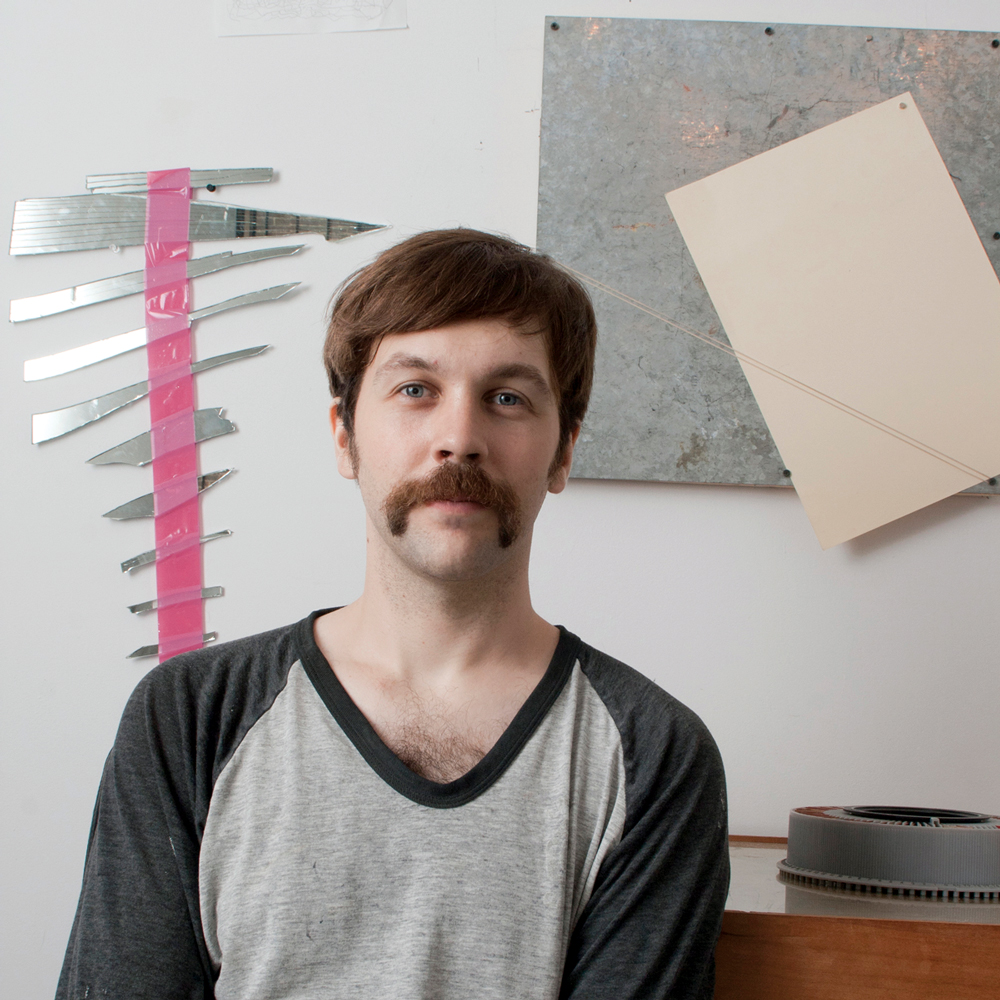Art-school graduates are finding ways to apply their skills in a variety of fields, creating their own jobs in the process. Here, we profile the different paths of seven graduates who have branched into web development, academia, curating and entrepreneurship.
1. Stephen McLeod: Artist, web developer and part-time professor at Sheridan College
I fell into art through modifying video games,” says Stephen McLeod. “I never realized that being who I am now was even possible. Studying at Guelph, the self-described nerd took advantage of the art program’s openness to pepper his studio education with courses in philosophy and computer science. On top of his own art practice and his collaborative work with Toronto’s VSVSVS, McLeod now freelances as a web developer and teaches Interaction Design at Sheridan College. “It’s all about how to use code creatively,” McLeod explains. “I’m interested in thinking about the issues that technology brings up in my everyday life, and questions that I can pose to my students that are near to my heart.”
2. Amélie Proulx: Ceramic artist and educator
In 2013, Amélie Proulx found a share of the limelight as the winner of the RBC Emerging Artist People’s Choice Award. While pursuing her BFA at Concordia, Proulx became interested in the acoustic and kinetic properties of ceramics, prompting her to devour courses in micro-controller programming and mechanics as she began an MFA at the Nova Scotia College of Art and Design in 2008. Now, as an instructor who has taught at Concordia and CEGEPs in Quebec City, Proulx says, “My experience as a student taught me the language of different materials. My goal is always to facilitate my students’ learning experience by encouraging them to develop a rigorous studio practice based on strong technical skills.”
3. Layne Hinton: Artist and co-curator, Art Spin
Upon graduation from OCAD University in 2013, Layne Hinton was on to great things. She received the InterAccess Media Arts Award, which granted her access to workshops, gear, curatorial mentorship and space for her to hone her studio practice. But by that point, she’d also established herself as an ambitious curator. “My background as an artist influences Art Spin,” says Hinton, who co-organizes the wildly successful cross-Toronto bicycle art tour. “It gives me and my co-curator, Rui Pimenta, a chance to create opportunities for other artists that we would want for ourselves: to create things like large and site-specific artworks in unconventional spaces.”
4. Jordan Bennett: Artist and filmmaker
“Studying at Grenfell, we had a lot of great Indigenous artists come through who really showed how I could create work to help share my knowledge,” says Jordan Bennett, one of Newfoundland’s representatives for the 2015 Venice Biennale. He completed his BFA at Memorial University of Newfoundland’s Grenfell campus in 2008, and soon got the chance to pay it forward, showing across Canada and serving as the first Indigenous artist-in-residence at the University of Alberta in 2012. He describes his newest film installation, a collaboration with imagineNATIVE and the National Film Board, as “rooted in my own experience of ice fishing.” For the Venice-bound work, Bennett sought out local artists and family to collaborate with: “It’s an immersive experience and a way to showcase the talent that comes out of Newfoundland.”
5. Yi Xin Tong: Artist and sound performer
After two years of studying geology in Beijing, Yi Xin Tong realized that art, more than science, was what he wanted to devote his time to. He dropped out and began a BFA at Simon Fraser University. Perhaps paradoxically, upon graduation, his geology-influenced work earned him the BMO 1st! Art prize for British Columbia in 2012. He has since completed his MFA at New York University, currently performs with the music project Siwen Saodi and creates large site-specific installations. “I travel to unfamiliar places without bringing any material,” says Tong. “This lets me create work I can never foreknow.”
6. Chelsea Boos: Artist and co-founder, the Drawing Room
While studying at the University of Alberta, Chelsea Boos craved interdisciplinarity. “I was doing a Bachelor of Design, but I took a healthy dose of art classes, too—that was the beginning of things for me,” she recalls. After graduating, she launched her design practice, Foolscap Studio, and began building urban interventions. In 2013, she co-founded the Drawing Room, a co-working space and alternative salon gallery spurred on by “Edmonton’s punk, DIY, ask-for-forgiveness-later aesthetic. I want to give artists and cultural producers space to experiment and explore dissenting ideas.”
7. Michael Peterson: Gallerist and entrepreneur
“Oddly enough, studying math made it possible for me to keep working in the arts,” says Michael Peterson, co-owner of Void, a commercial gallery space for emerging artists in Saskatoon. After completing a BFA in 2009, he returned to the University of Saskatchewan to finish a BSc. Eventually, he began designing websites for galleries and organizing exhibitions in storefront spaces. By 2012, he and two business partners had opened Void. “We want to create an opportunity for emerging artists to get a sales history, but we also want to get young people collecting,” he explains. “We don’t show work we couldn’t buy.”
The original version of this article appeared in the Winter 2015 issue of Canadian Art in a special section on the changing art school.









